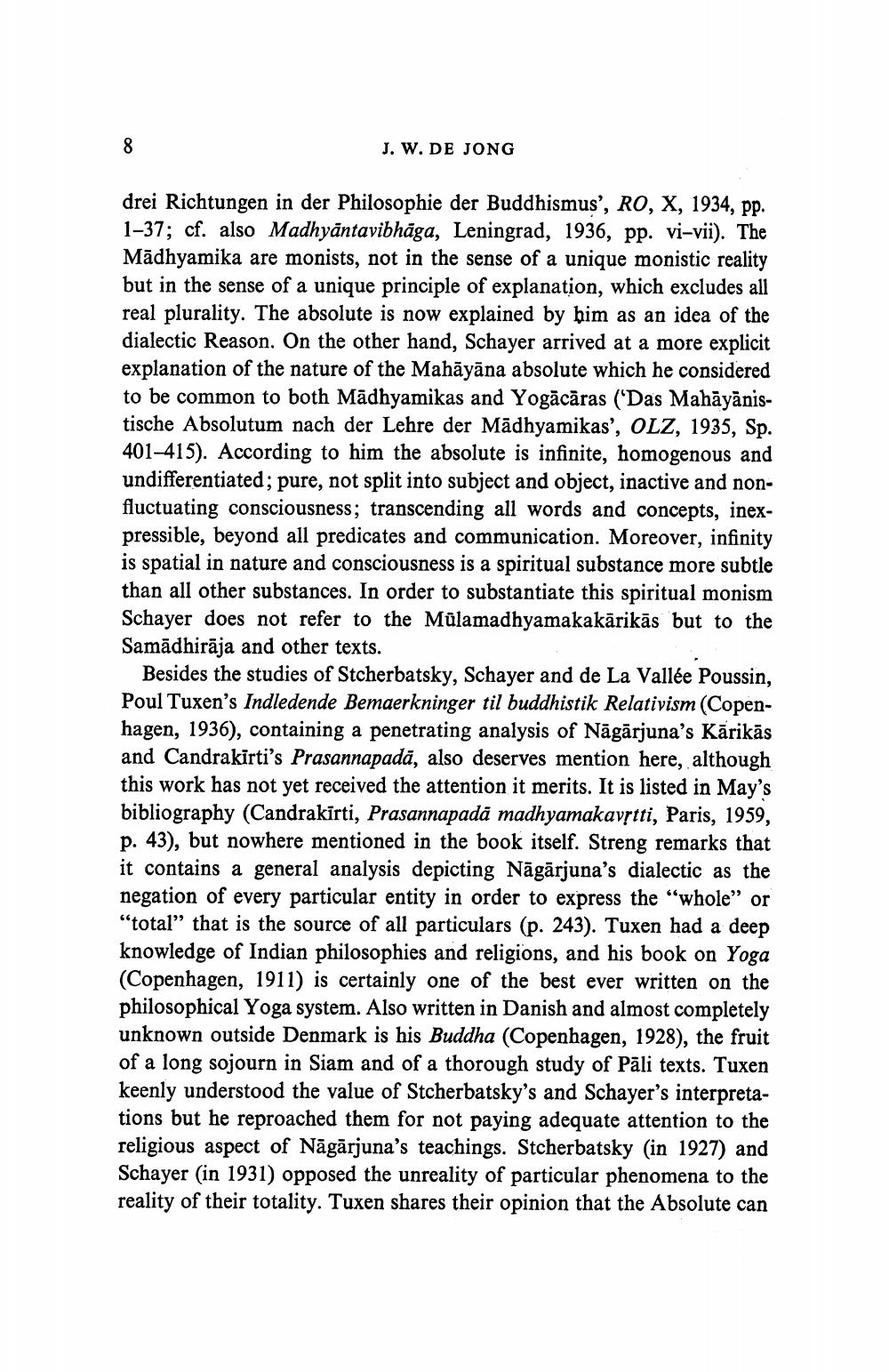Book Title: Emptiness Author(s): J W De Jong Publisher: J W De Jong View full book textPage 2
________________ 8 J. W. DE JONG drei Richtungen in der Philosophie der Buddhismus', RO, X, 1934, pp. 1-37; cf. also Madhyantavibhāga, Leningrad, 1936, pp. vi-vii). The Madhyamika are monists, not in the sense of a unique monistic reality but in the sense of a unique principle of explanation, which excludes all real plurality. The absolute is now explained by him as an idea of the dialectic Reason. On the other hand, Schayer arrived at a more explicit explanation of the nature of the Mahāyāna absolute which he considered to be common to both Madhyamikas and Yogācāras ('Das Mahāyānistische Absolutum nach der Lehre der Madhyamikas', OLZ, 1935, Sp. 401-415). According to him the absolute is infinite, homogenous and undifferentiated; pure, not split into subject and object, inactive and nonfluctuating consciousness; transcending all words and concepts, inexpressible, beyond all predicates and communication. Moreover, infinity is spatial in nature and consciousness is a spiritual substance more subtle than all other substances. In order to substantiate this spiritual monism Schayer does not refer to the Mülamadhyamakakārikās but to the Samādhirāja and other texts. Besides the studies of Stcherbatsky, Schayer and de La Vallée Poussin, Poul Tuxen's Indledende Bemaerkninger til buddhistik Relativism (Copenhagen, 1936), containing a penetrating analysis of Nagarjuna's Kārikās and Candrakirti's Prasannapadă, also deserves mention here, although this work has not yet received the attention it merits. It is listed in May's bibliography (Candrakirti, Prasannapada madhyamakavṛtti, Paris, 1959, p. 43), but nowhere mentioned in the book itself. Streng remarks that it contains a general analysis depicting Nagarjuna's dialectic as the negation of every particular entity in order to express the "whole" or "total" that is the source of all particulars (p. 243). Tuxen had a deep knowledge of Indian philosophies and religions, and his book on Yoga (Copenhagen, 1911) is certainly one of the best ever written on the philosophical Yoga system. Also written in Danish and almost completely unknown outside Denmark is his Buddha (Copenhagen, 1928), the fruit of a long sojourn in Siam and of a thorough study of Pāli texts. Tuxen keenly understood the value of Stcherbatsky's and Schayer's interpretations but he reproached them for not paying adequate attention to the religious aspect of Nagarjuna's teachings. Stcherbatsky (in 1927) and Schayer (in 1931) opposed the unreality of particular phenomena to the reality of their totality. Tuxen shares their opinion that the Absolute canPage Navigation
1 2 3 4 5 6 7 8 9
